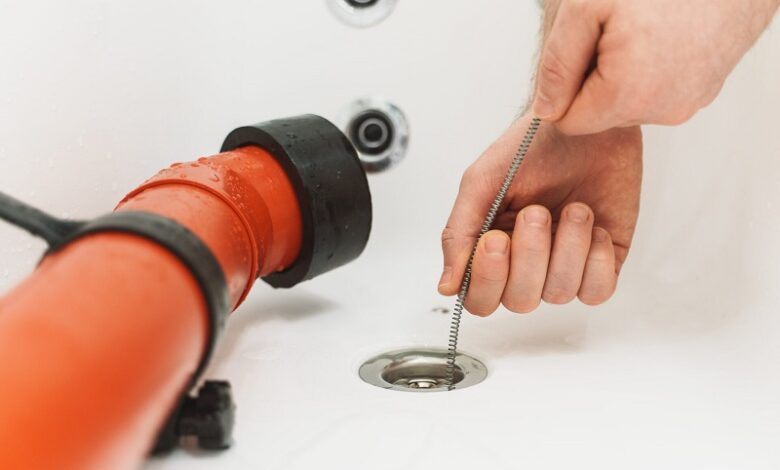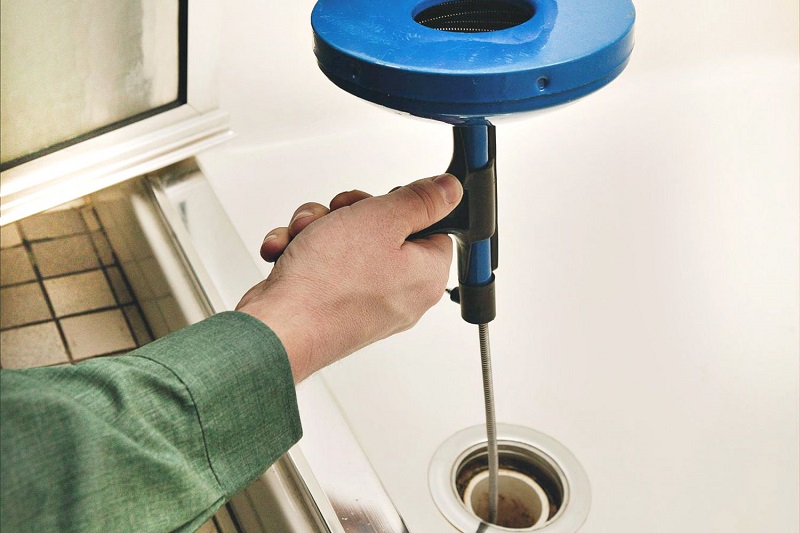
Hey there, ever been stuck with a stubborn drain clog that just won’t budge? We’ve all been there, cursing at our sinks and tubs, wondering why they’re being so uncooperative. But fret not, my friend, because today we’re diving headfirst into the world of drain clogs and how to defeat them. By the time you finish reading this, you’ll be a drain-clog-slaying pro!
Why Do Drain Clogs Happen?
Before we jump into the nitty-gritty of removing stubborn clogs, let’s take a moment to understand why they happen in the first place. Imagine your drain as a busy highway for water, soap, and all sorts of gunk. Over time, this traffic jam can build up, creating a clog. It’s like a pile-up on the freeway during rush hour – frustrating and messy!
The Plunger: Your Trusty Sidekick
Alright, let’s get started with the basics. If you’re dealing with a clogged sink or bathtub drain, your trusty sidekick in this battle is the good ol’ plunger. You’ve probably seen one before; it’s like a rubber superhero cape for your drain.
- Step 1: Fill the sink or tub with enough water to cover the plunger’s rubber cup. This helps create a good seal.
- Step 2: Place the plunger over the drain opening and press down firmly but not too forcefully. You want to create a tight seal.
- Step 3: Start plunging vigorously. Push and pull the plunger up and down for about 15-20 seconds. This action creates pressure changes that can dislodge the clog.
- Step 4: Remove the plunger and check if the water drains freely. If it does, congratulations! If not, repeat the process a few more times.
Remember, patience is key here. It might take a few rounds of plunging to break that stubborn clog’s spirit.
Baking Soda and Vinegar Magic
If your plunger isn’t doing the trick, it’s time to bring out the big guns – baking soda and vinegar. It’s like a science experiment in your drain!
- Step 1: Pour about 1/2 cup of baking soda down the clogged drain.
- Step 2: Follow it up with 1/2 cup of white vinegar. When these two mix, they create a fizzy, bubbling reaction that can help break down the clog.
- Step 3: Cover the drain with a plug or cloth to trap the fizz inside. This helps direct the cleaning action towards the clog.
- Step 4: Wait for about 15-20 minutes to let the magic happen.
- Step 5: After the wait, remove the cover and flush the drain with hot water.
This DIY combo can work wonders on mild to moderate clogs, dissolving gunk and restoring your drain to its former glory.
The Trusty Coat Hanger Trick
Sometimes, a good old-fashioned coat hanger can be your secret weapon against clogs.
- Step 1: Straighten out a wire coat hanger, leaving a small hook at one end.
- Step 2: Carefully insert the hooked end into the drain and start fishing around. Be gentle; you don’t want to scratch your pipes.
- Step 3: Try to hook onto the clog and pull it out. It might take a bit of patience and finesse.
- Step 4: Once you’ve removed the clog, run hot water to flush out any remaining debris.
This method is especially handy for hair clogs in the shower or bathtub drain. Just be cautious not to push the clog further down the drain.
Chemical Drain Cleaners: A Last Resort
If all else fails, you might consider using a chemical drain cleaner. Think of it as calling in the heavy artillery – it’s effective but not without risks.
- Step 1: Read the instructions on the bottle carefully. These chemicals can be hazardous, so safety first!
- Step 2: Pour the recommended amount of the cleaner down the drain.
- Step 3: Wait for the specified time mentioned in the instructions.
- Step 4: Flush the drain with hot water.
While chemical drain cleaners can be effective, they can also be harsh on your plumbing and the environment. Use them sparingly and only as a last resort.
The Snake: Your Drain’s Best Friend
When all else fails, the drain snake (or auger) is here to save the day. It’s like a plumber’s secret weapon.
- Step 1: Insert the snake into the drain and turn the handle clockwise to extend it.
- Step 2: Keep feeding the snake down the drain until you encounter resistance – that’s your clog.
- Step 3: Turn the handle counterclockwise to help break up or grab onto the clog.
- Step 4: Carefully pull the snake out, and you’ll likely bring the clog with it.
- Step 5: Flush the drain with hot water to clear any remaining debris.
The drain snake is fantastic for tackling those deep, stubborn clogs that are out of reach for other methods.
Prevention is the Best Medicine
Now that you’ve conquered the drain clog, let’s talk about keeping them at bay. After all, an ounce of prevention is worth a pound of cure!
- Use Drain Screens: These handy little devices catch hair, food particles, and other debris before they can go down the drain.
- Regular Cleaning: Make it a habit to flush your drains with hot water regularly. It helps prevent the buildup of gunk.
- Be Mindful of What Goes Down: Avoid pouring grease, coffee grounds, and large food scraps down the sink.
- Hair Maintenance: In the bathroom, consider using a drain cover to catch hair, and clean it regularly.
- Dispose of Chemicals Properly: Don’t pour chemicals like paint or motor oil down the drain.
By following these simple steps, you can reduce the chances of clogs occurring in the first place. Prevention truly is the best medicine!
FAQs (Frequently Asked Questions)
Q1: Can I use a plunger on a toilet clog?
Absolutely! A plunger is a versatile tool that works on toilet clogs as well. Follow the same steps we outlined for sink and tub drains, but make sure to use a flange plunger specifically designed for toilets. It creates a better seal.
Q2: Are chemical drain cleaners safe for septic systems?
Most chemical drain cleaners are not recommended for septic systems. The harsh chemicals can harm the beneficial bacteria in your septic tank. Consider using natural methods like baking soda and vinegar or a drain snake instead.
Q3: What should I do if none of these methods work, and my drain is still clogged?
If you’ve tried all these methods and the clog persists, it’s time to call in a professional plumber. They have specialized tools and expertise to tackle even the most stubborn clogs without causing damage to your plumbing.
Q4: Is it safe to use a drain snake on my own?
Using a drain snake can be safe if you follow the instructions carefully and take precautions. However, if you’re not comfortable or have doubts about using it, it’s best to consult a professional plumber to avoid any potential mishaps.
Q5: How often should I clean my drains to prevent clogs?
Cleaning your drains with hot water once a week is a good practice to prevent clogs. However, if you have a lot of hair or other debris going down the drains, you might want to clean them more frequently, perhaps every few days.
Conclusion
And there you have it, my fellow drain warriors! With these tips and tricks up your sleeve, you’re well-equipped to take on even the most stubborn drain clogs. So, the next time your sink or tub decides to play hard to get, you know just what to do – plunge, fizz, fish, or snake your way to victory! Happy plumbing!



